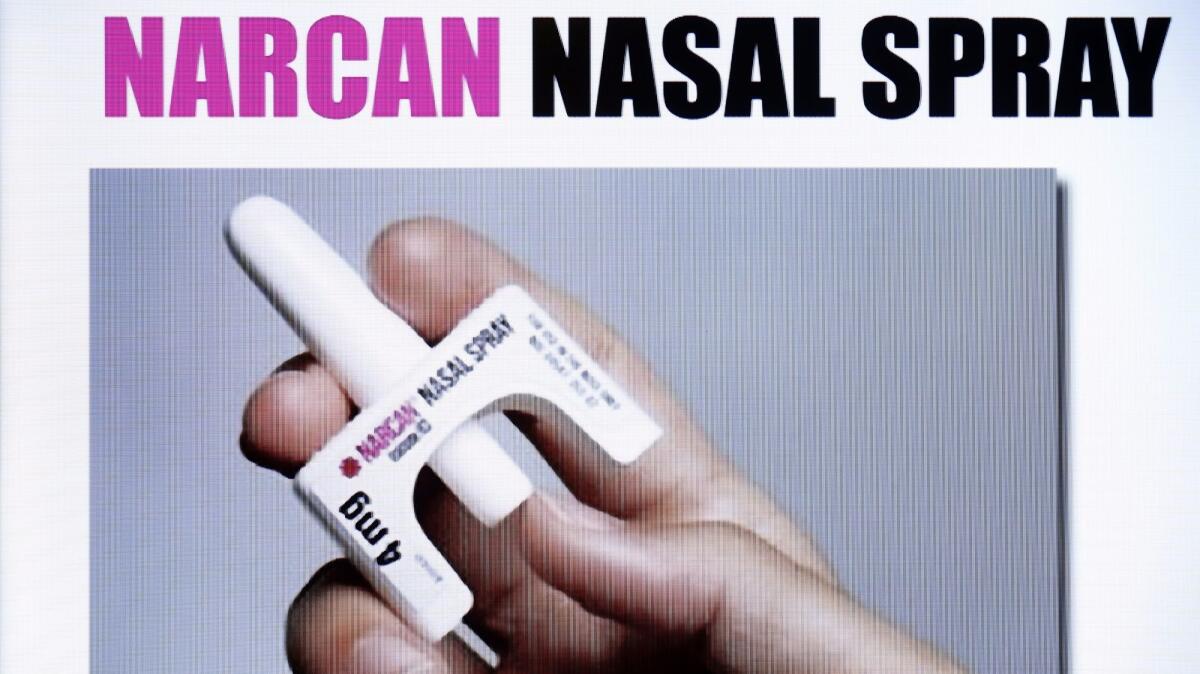Crescenta Valley Sheriff’s Station among first to try nasal spray kits used to treat opioid overdoses

- Share via
The Crescenta Valley Sheriff’s Station is one of three in Los Angeles County to be selected for a pilot program that will arm deputies with a nasal spray to treat people suffering from an opioid overdose, officials announced last week.
In a news conference last Thursday, Sheriff Jim McDonnell explained more than 1,200 doses of Narcan, one brand of the anti-opioid spray naloxone, would be distributed to sheriff’s deputies assigned to the Crescenta Valley, Santa Clarita and East L.A. sheriff’s stations, as well as members of the department’s Community Colleges and Parks bureaus.
Crescenta Valley Station Capt. Chris Blasnek, who attended the conference, said Monday sheriff’s deputies are often the first responders to a scene and, as such, stand to benefit greatly from having naloxone on hand.
“Right now, deputies out there have nothing. We’re not able to combat the effects of the overdose,” Blasnek said. “So having this out there right away could really help us.”

While naloxone has the power to interrupt an overdose, he added, it is not found to be harmful if administered to someone who is not having one.
A two-pack of the spray kits cost $75, according to the Los Angeles Times. Blasnek said he hopes to provide at least one dispenser to every deputy at the Crescenta Valley station.
With help from the California Department of Public Health, the Los Angeles County Sheriff’s Department received a grant for an additional 5,000 doses of Narcan. McDonnell said those doses would likely be distributed across a wider field in the coming months.
“The use of Narcan on a patient may not cure the addiction epidemic in this country, but using Narcan to reverse an overdose gives that person another opportunity to make a choice,” the sheriff said in a June 15 statement. “Without Narcan, there is often no choice, just the tragic aftermath of family, friends and loved ones mourning an unnecessary death.”
The Centers for Disease Control and Prevention estimated 33,000 people nationwide died in 2015 from opioid and heroin overdoses. Roughly half of all such deaths involve prescription opioids, the agency reports.
Blasnek said Monday he hasn’t seen a serious opioid addiction problem in La Cañada and La Crescenta, but was still grateful to be part of the pilot program, which asks stations to track the number of dispensers issued and used.
“I’m going to be watching it carefully, because I’m very interested in this,” the captain said of the program.
Twitter: @SaraCardine
